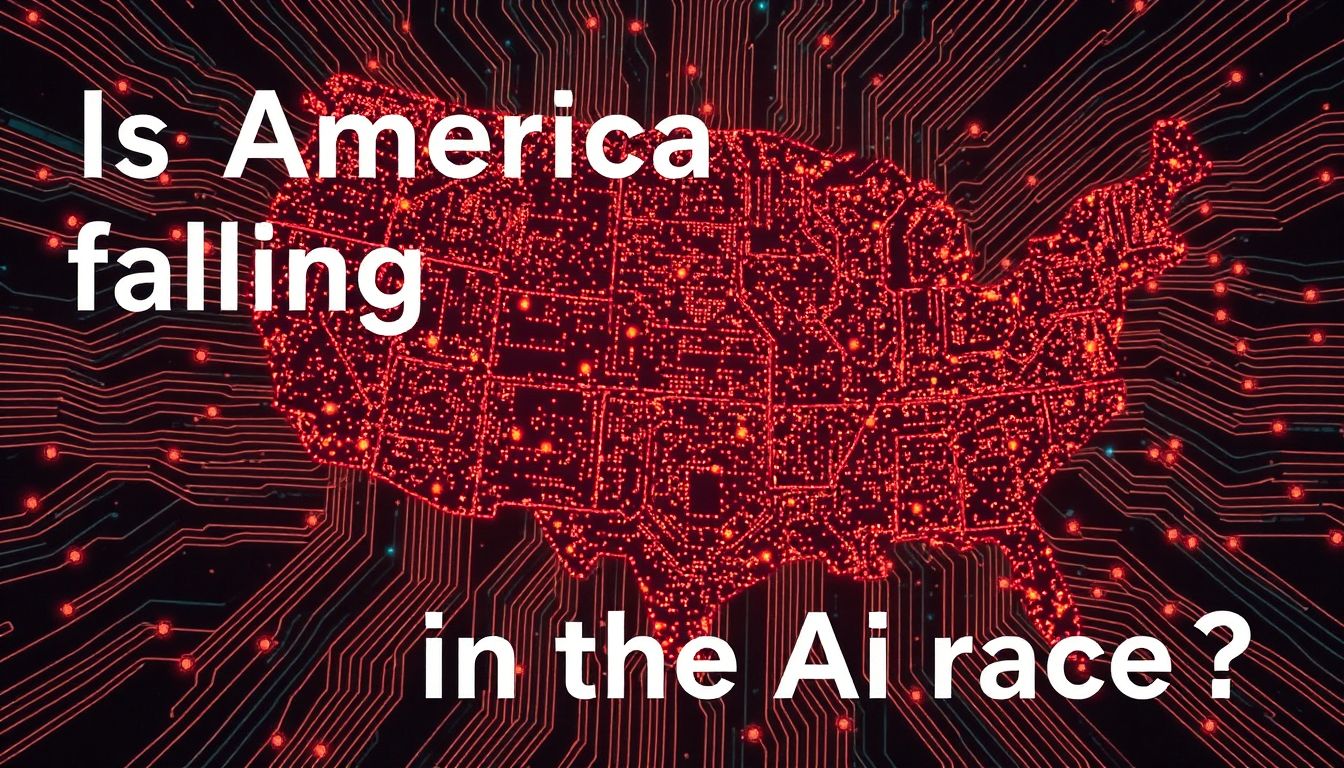
Is America Falling Behind in the AI Race?
Artificial intelligence (AI) is reshaping industries, economies, and global power dynamics. For years, the U.S. has been the undisputed leader in AI innovation, home to tech giants like OpenAI, Google, and Anthropic. But recent developments suggest America's dominance may be slipping—especially as China accelerates its own AI advancements. So, is the U.S. really falling behind? And if so, what can be done about it?
The Rise of China’s AI Powerhouse
China has made no secret of its ambitions to lead in AI by 2030. State-backed initiatives, aggressive funding, and rapid deployment of AI models have positioned China as a formidable competitor. Companies like Baidu and DeepSeek are releasing models that rival—and in some cases, surpass—American counterparts in both performance and affordability.
Take DeepSeek’s R1 model, for example. It’s not just technologically advanced; it’s also heavily subsidized, making it accessible to a global market at a fraction of the cost of U.S. alternatives. Meanwhile, Baidu’s Ernie series has demonstrated impressive benchmarks while being priced significantly lower than similar U.S. models. This aggressive pricing strategy is forcing American firms to rethink their business models.
Why the U.S. Should Be Concerned
The competition isn’t just about who builds the best chatbot. AI has far-reaching implications for national security, economic dominance, and technological sovereignty. Here’s why the U.S. should be paying close attention:
1. National Security Risks
AI isn’t just a tool for business—it’s a potential weapon. Chinese regulations require AI companies to share data with the government, raising concerns about espionage and cyber threats. If China gains an edge in AI, it could exploit vulnerabilities in U.S. infrastructure, manipulate global information systems, or even develop advanced cyber warfare capabilities.
2. Economic Competition
AI is the backbone of future industries, from healthcare to finance to defense. If China dominates AI development, it could dictate global standards, control supply chains, and outcompete U.S. businesses. Already, Chinese AI firms are undercutting American prices, making it harder for U.S. companies to maintain market share.
3. Talent and Innovation Drain
China is investing heavily in AI education and talent acquisition. If the U.S. doesn’t keep pace, top researchers and engineers may flock to Chinese labs, further eroding America’s technological edge.
Where the U.S. Is Losing Ground
Several factors are contributing to America’s potential decline in AI leadership:
1. Regulatory Fragmentation
Unlike China’s centralized approach, U.S. AI policy is scattered across federal and state agencies. This lack of cohesion slows innovation and creates compliance headaches for companies trying to scale AI solutions.
2. Infrastructure Gaps
Training cutting-edge AI models requires massive computing power and energy. China is building dedicated AI data centers at an unprecedented rate, while the U.S. struggles with outdated power grids and bureaucratic red tape.
3. Export Controls Backfiring
Restricting AI chip sales to China was meant to slow its progress, but Chinese firms are adapting—developing homegrown alternatives and finding workarounds. Meanwhile, U.S. companies face lost revenue and reduced competitiveness in global markets.
How America Can Stay Ahead
Falling behind doesn’t have to be inevitable. Here’s what the U.S. can do to reclaim its AI leadership:
1. Boost Federal AI Investment
The government must increase funding for AI research, startups, and infrastructure. Public-private partnerships can accelerate innovation while ensuring ethical standards.
2. Streamline Regulations
A unified federal AI policy would reduce confusion and encourage faster adoption. Export controls should be strategic—targeting true security risks without stifling business.
3. Prioritize AI Education
Expanding STEM programs, offering incentives for AI talent, and fast-tracking visas for top researchers can help the U.S. maintain its talent pipeline.
4. Accelerate Government AI Adoption
Federal agencies should integrate AI into operations—from defense to healthcare. This not only improves efficiency but also drives demand for U.S.-developed AI solutions.
The Bottom Line
The AI race isn’t just about technology—it’s about global influence. While China is making aggressive moves, the U.S. still has the talent, resources, and innovative spirit to compete. But time is running short. Without decisive action, America risks ceding its AI dominance to a rival that doesn’t share its values. The question isn’t just whether the U.S. is falling behind—it’s whether it’s willing to fight to stay ahead.
